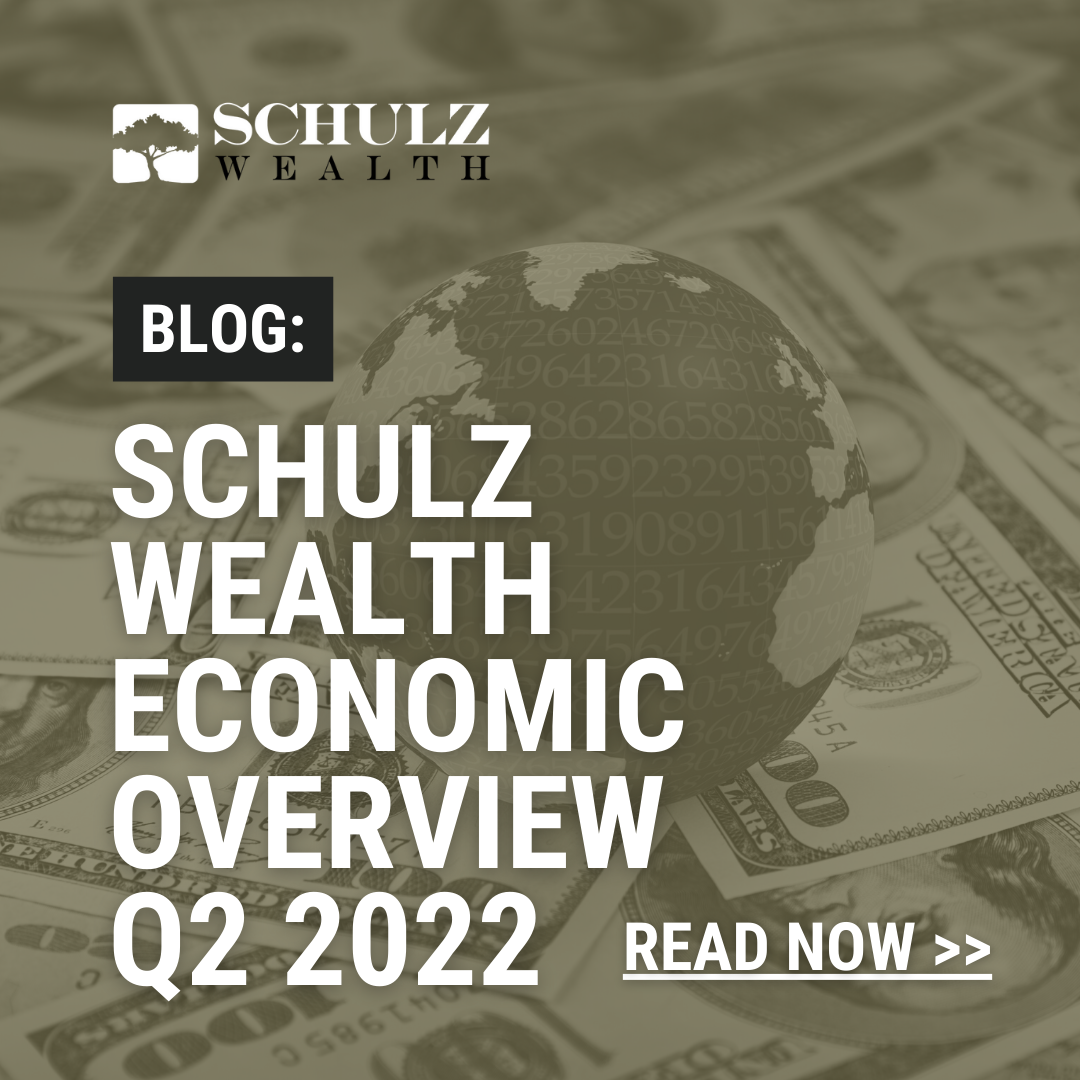Schulz Wealth Economic Overview – Q2 2022
As the year has rolled on, current inflation levels have become the most prominent overhanging fear in the economy. Inflation is 9% for the first time since the 70s and 80s, and the more significant issue has been its persistence. The Fed knows it can combat inflation by raising interest rates but is also walking the fine line of not wanting to push rates so high it kills all economic growth.
The Q2 GDP numbers came in, and the US economy posted the second consecutive quarter of negative GDP growth on a year-over-year basis. Consecutive quarters of negative growth are the standard definition of a recession. However, if that is the case, this recession certainly looks much different than a typical one.
For starters, the US added over 1.1 million jobs in Q2, averaging 375k per month over the quarter. While this figure is lower than Q1, it is showing signs of stabilizing after the massive spike in unemployment in 2020 due to covid and the surge in rehiring employees as businesses reopened. It’s hard to imagine a recession with 3.6% unemployment because that is low.
Looking under the hood and understanding the calculations behind GDP, we see another reason recession claims may be off base. In Q1, the trade component to GDP was way out of whack as supply chain concerns caused companies to drive up inventory, throwing off the net exports number. The increase in imports in Q1 resulted in a Q2 inventory hangover that affected GDP negatively. These are technical inputs to a recession that are very different from high unemployment and low consumer spending, which are nearly always present in a downturn.
On the earnings front, around 70% of companies with reported numbers have beaten their earnings estimates. Earnings growth has slowed, but an average 10% annualized growth is more sustainable now than in 2021. The mix of spending has shifted to a lot of discretionary items like travel, and there is a concern that if inflation persists, it will begin to erode disposable income meaningfully.
The US consumer is employed, has money to spend, and is spending it. With 70% of the economy tied to consumer spending, it’s hard to connect the dots between that and recession. The main threat remains inflation, and the reasoning is twofold. Continual inflation will cause the Fed to push rates higher, ultimately thwarting growth. Inflation also erodes purchasing power for continual spending on discretionary goods and services. The Fed is out to solve the inflation problem, but at what cost? That is the question.
As always, please reach out with any questions! These are our thoughts, have a great Thursday.
– Austin Smith, CFA, Schulz Wealth
*Numbers and Data Sourced from First Trust’s Economic Blog, US Department of Labor Blog, and Fidelity Viewpoints
.png)

